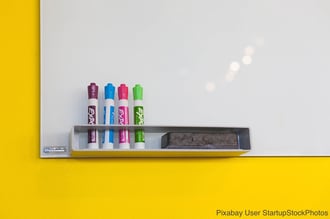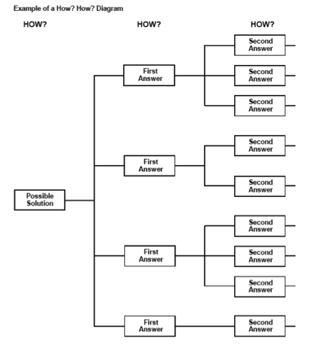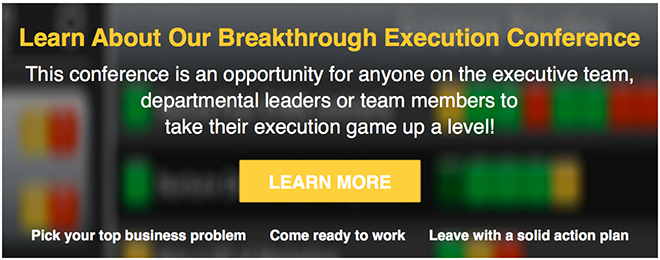"Learning and innovation go hand in hand. The arrogance of success is to think that what you did yesterday will be sufficient for tomorrow." ~ William Pollard
The above quote is perfect for fast growing companies and quick moving teams. I occasionally wonder if I  shock company leaders when I tell them that in three years – with no personal growth – that they won’t be qualified for their current position. Of course, that presumes that the position will still exist! One conclusion I form, based on the occasional shocked reaction, is that many leaders at fast growing entrepreneurial firms don't feel personally responsible for being innovative.
shock company leaders when I tell them that in three years – with no personal growth – that they won’t be qualified for their current position. Of course, that presumes that the position will still exist! One conclusion I form, based on the occasional shocked reaction, is that many leaders at fast growing entrepreneurial firms don't feel personally responsible for being innovative.
I often discover that entrepreneurs are busy growing companies and that they seem to feel personally responsible for facilitating innovation, which is entirely different from actually coming up with the grand concepts that have created unique new business models, processes, services, and products.
So, what makes innovators different? According to studies of identical twins separated at birth, our ability to think creatively comes one-third from genetics so innovators are not just born that way. Two-thirds of the innovation skill set comes through learning.
According to a six-year study conducted by Harvard Business Review authors, there are five habits that reveal the underpinnings of creative thinking. These five habits are embraced by innovators such as Jeff Bezos of Amazon.com, Herb Kelleher of Southwest Airlines and Peter Thiel of PayPal.
The Top 5 Habits of Innovators are:
- Associating - The ability to successfully connect seemingly unrelated issues, ideas or questions from different fields
- Questioning - Constantly asking questions that challenge common wisdom
- Observing - Scrutinizing common phenomena and looking out for common behaviors - figuring out how things could be done differently. This includes looking for the bottlenecks in the processes for administration, operations, manufacturing, construction, etc.
- Experimenting - Actively trying out new ideas by creating prototypes and launching pilots. (Think of Edison who said, "I haven't failed. I've simply found 10,000 ways that do not work."). At Rhythm, we refer to this with Jim Collins' language of firing bullets (rather than cannonballs).
- Networking - Devoting time and energy to finding and testing new ideas through a network of individuals and organizations
Leaders Educate to Innovate
Studies show that you can learn innovation by embracing the unique habits of well-known innovators. Here is how you can get your team started with innovation habits today within the structure of your annual, quarterly, monthly, or specific issue meeting.
- You (or participants) should enter the meeting with two or three current issues, impasses or problems.
- Brainstorm opportunities. Use this opportunity to question, observe and experiment with the ideas the group generates
Next, you determining the complete steps needed to implement a solution by asking how. Our regular blog readers will know that we recommend a strategy of the five whys: asking why five times to get to the root. In the case of innovation, you should use the five hows. Ask how? How? Ask five times to highlight solutions that will provide the greatest benefit when implemented.
The potential solution is analyzed repeatedly by asking the question “How?” until a complete picture of the practical implementation of that solution is reached. This can then be evaluated against other “How? How?” diagrams for other possible solutions to determine the most appropriate for the situation. An analysis of the diagram will also highlight key implementation factors where greatest impact will be achieved.
practical implementation of that solution is reached. This can then be evaluated against other “How? How?” diagrams for other possible solutions to determine the most appropriate for the situation. An analysis of the diagram will also highlight key implementation factors where greatest impact will be achieved.
At Rhythm Systems, we promise simple approaches, yet that doesn’t mean it’s always easy. The continual repetition of the “how” question can become tedious unless the participants work in a relaxed atmosphere. That’s your responsibility. Create the right atmosphere and a systematic process or format of keeping track of the information.
Try This Format
Write the solution to be analyzed, centered vertically on the left-hand side of the flipchart or whiteboard.
- Ask participants the question “How?” and record all answers.
- Take each of the answers from the first round, and pose the question “How?” again and record the answers.
- Carry out this process of asking “How?” repeatedly until further answers become inappropriate. Use additional pages of flipchart paper to record the answers in flowchart format, attaching them to the wall so that they can be seen. Remember to number each page so that they can be retrieved and worked on in later sessions.
- Allow time to incubate the information, and let participants read through the complete How? How? diagram. Identify how many answers to “Hows” are repeated more than once and highlight them. These represent the key elements in the implementation process.
Adapting the top five habits of innovators, and educating your team, will boost your level of innovation. And what motivates innovators? According to one study, innovators actively desire to change the status quo, and they regularly take risks to make change happen. So, what are you waiting for? Don’t speculate when you can innovate!
Photo Credit: iStock by Getty Images



 LinkedIn
LinkedIn
 Facebook
Facebook
